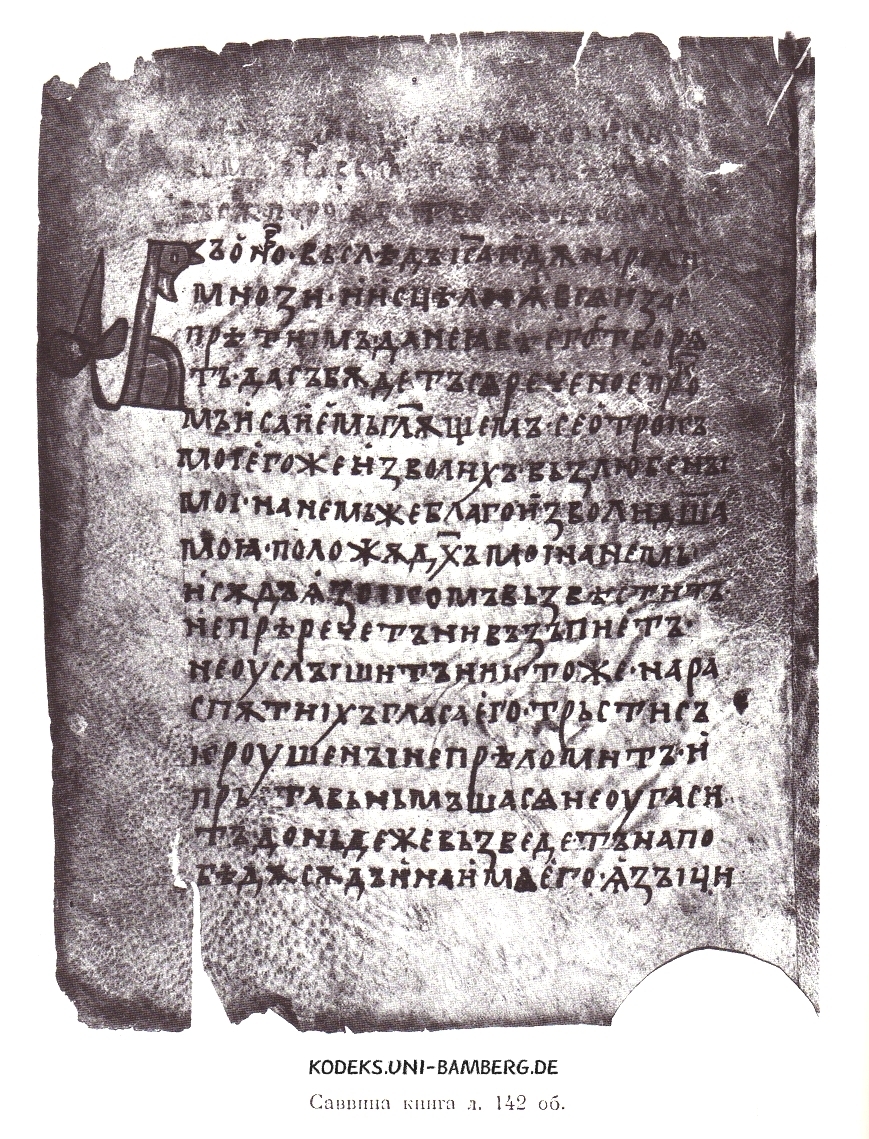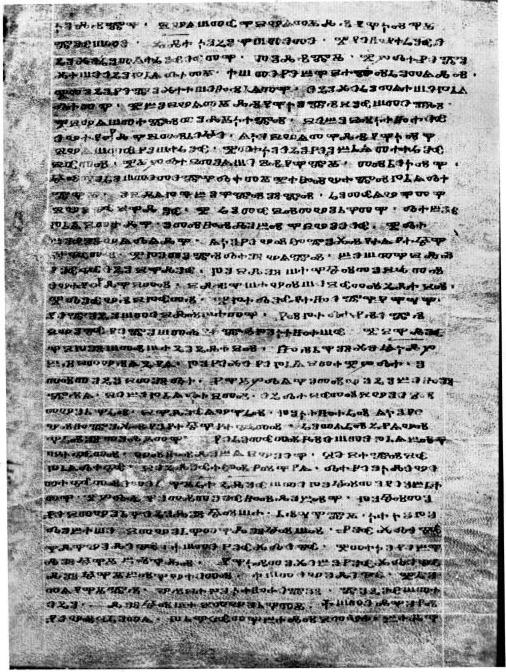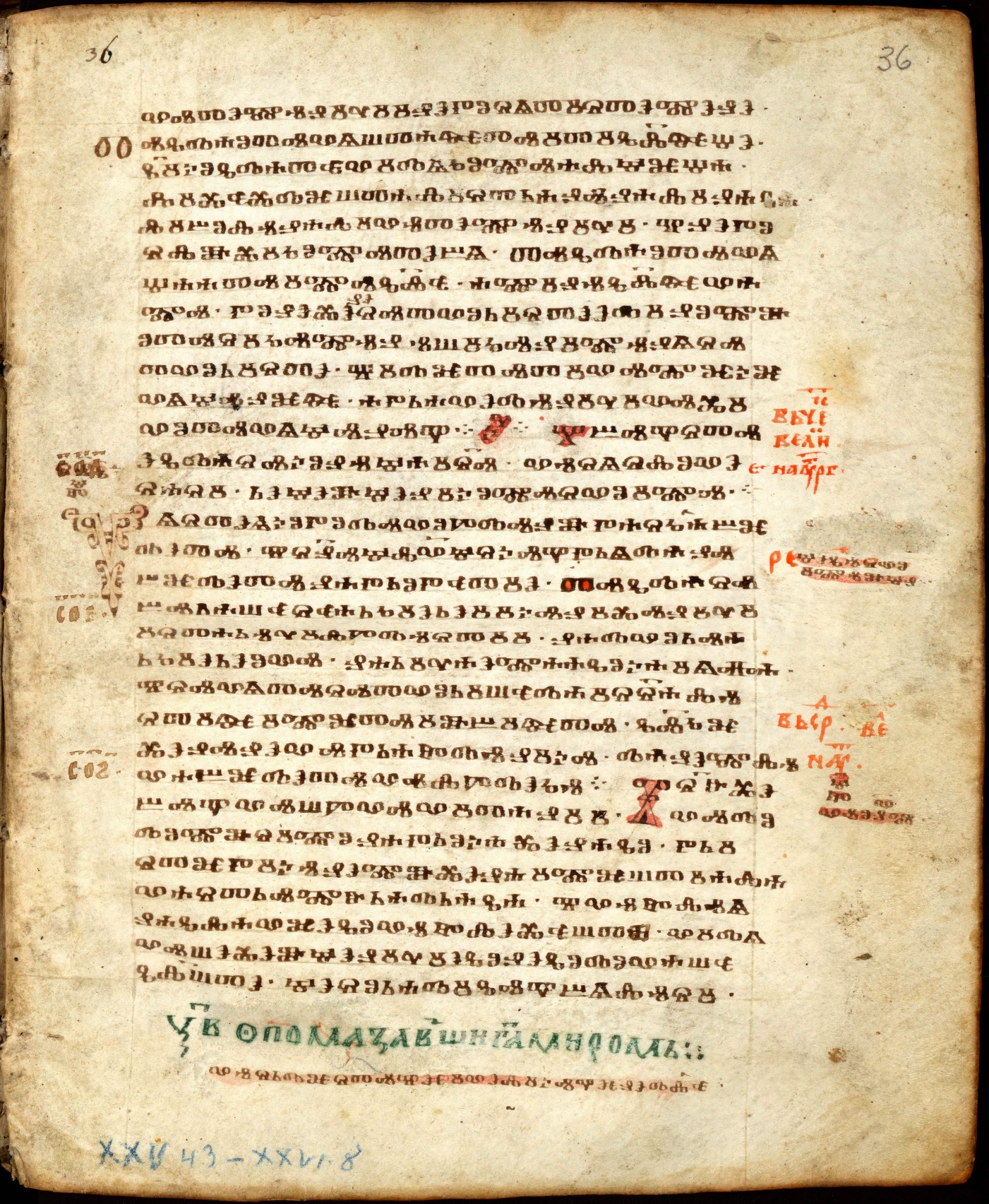|
Sava's Book
Sava's book ( bg, Савина книга, ''Savina kniga''; russian: Саввина книга, ''Savvina kniga'') is a 129-folio Cyrillic Old Church Slavonic canon evangeliary, written in the eleventh century. The original 126 parchment folios are of Bulgarian provenance, being bound into a larger codex with later additions of the Russian Church Slavonic recension. The codex is named the priest Sav(v)a, who inscribed his name on two of the original folios. There is no other historical record of Sava, and it is therefore believed that he was one of the manuscript's copyists. The early history of Sava's book is unknown. What can be ascertained is that the codex was in the Seredkino monastery near Pskov until at least the 17th century. Afterwards it was moved to the manuscript collection of the Moscow Synodal Printing House, where it was found in 1866 by the Russian Slavist Izmail Sreznevsky, who gave the codex its modern-day appellation and was the first one to publish it (Sai ... [...More Info...] [...Related Items...] OR: [Wikipedia] [Google] [Baidu] |
Codex Zographensis
The ''Codex Zographensis'' (or ''Tetraevangelium Zographense''; scholarly abbreviation ''Zo'') is an illuminated Old Church Slavonic canon manuscript. It is composed of 304 parchment folios; the first 288 are written in Glagolitic containing Gospels and organised as Tetraevangelium (Matthew, Mark, Luke, and John), and the rest written in Cyrillic containing a 13th-century synaxarium. It is dated back to the end of the 10th or beginning of the 11th century. Discovery and publishing The manuscript originally belonged to the Bulgarian Zograf Monastery on Mount Athos. It is said that it was kept at a conventual church near Ierisso and later transferred to the monastery's library. In 1843, the Croatian writer and Habsburgian diplomat Antun Mihanović discovered the manuscript during his stay at the monastery. The codex's importance was announced by the Russian historian and folklorist Victor Grigorovich who visited the monastery one year later and who is regarded as the founder of S ... [...More Info...] [...Related Items...] OR: [Wikipedia] [Google] [Baidu] |
Medieval Bulgarian Literature
Medieval Bulgarian literature is Bulgarian literature in the Middle Ages. With the Bulgarian Empire welcoming the disciples of Cyril and Methodius after they were expelled from Great Moravia, the country became a centre of rich literary activity during what is known as the Golden Age of medieval Bulgarian culture. In the late 9th, the 10th and early 11th century literature in Bulgaria prospered, with many books being translated from Byzantine Greek, but also new works being created. Many scholars worked in the Preslav and Ohrid Literary Schools, creating the Cyrillic script for their needs. Bulgarian scholars and works influenced most of the Slavic world, spreading Old Bulgarian (Old Church Slavonic), the Cyrillic and the Glagolithic alphabet to Kievan Rus', medieval Serbia and medieval Croatia. Important work from this period is Didactic gospels, a collection of sermons, with a prototype the didactic of Bishop Constantine of Preslav written in Old Bulgarian (Old Church Slavoni ... [...More Info...] [...Related Items...] OR: [Wikipedia] [Google] [Baidu] |
11th-century Biblical Manuscripts
The 11th century is the period from 1001 ( MI) through 1100 ( MC) in accordance with the Julian calendar, and the 1st century of the 2nd millennium. In the history of Europe, this period is considered the early part of the High Middle Ages. There was, after a brief ascendancy, a sudden decline of Byzantine power and a rise of Norman domination over much of Europe, along with the prominent role in Europe of notably influential popes. Christendom experienced a formal schism in this century which had been developing over previous centuries between the Latin West and Byzantine East, causing a split in its two largest denominations to this day: Roman Catholicism and Eastern Orthodoxy. In Song dynasty China and the classical Islamic world, this century marked the high point for both classical Chinese civilization, science and technology, and classical Islamic science, philosophy, technology and literature. Rival political factions at the Song dynasty court created strife amon ... [...More Info...] [...Related Items...] OR: [Wikipedia] [Google] [Baidu] |
Old Church Slavonic Canon
Old Church Slavonic or Old Slavonic () was the first Slavic literary language. Historians credit the 9th-century Byzantine missionaries Saints Cyril and Methodius with standardizing the language and using it in translating the Bible and other Ancient Greek ecclesiastical texts as part of the Christianization of the Slavs. It is thought to have been based primarily on the dialect of the 9th-century Byzantine Slavs living in the Province of Thessalonica (in present-day Greece). Old Church Slavonic played an important role in the history of the Slavic languages and served as a basis and model for later Church Slavonic traditions, and some Eastern Orthodox and Eastern Catholic churches use this later Church Slavonic as a liturgical language to this day. As the oldest attested Slavic language, OCS provides important evidence for the features of Proto-Slavic, the reconstructed common ancestor of all Slavic languages. Nomenclature The name of the language in Old Church Slavonic ... [...More Info...] [...Related Items...] OR: [Wikipedia] [Google] [Baidu] |
Biblical Manuscripts
A biblical manuscript is any handwritten copy of a portion of the text of the Bible. Biblical manuscripts vary in size from tiny scrolls containing individual verses of the Jewish scriptures (see ''Tefillin'') to huge polyglot codices (multi-lingual books) containing both the Hebrew Bible (Tanakh) and the New Testament, as well as extracanonical works. The study of biblical manuscripts is important because handwritten copies of books can contain errors. Textual criticism attempts to reconstruct the original text of books, especially those published prior to the invention of the printing press. Hebrew Bible (or Tanakh) manuscripts The Aleppo Codex (c. 920 CE) and Leningrad Codex (c. 1008 CE) were once the oldest known manuscripts of the Tanakh in Hebrew. In 1947, the finding of the Dead Sea scrolls at Qumran pushed the manuscript history of the Tanakh back a millennium from such codices. Before this discovery, the earliest extant manuscripts of the Old Testament were in G ... [...More Info...] [...Related Items...] OR: [Wikipedia] [Google] [Baidu] |
Matica Hrvatska
Matica hrvatska ( la, Matrix Croatica) is the oldest independent, non-profit and non-governmental Croatian national institution. It was founded on February 2, 1842 by the Croatian Count Janko Drašković and other prominent members of the Illyrian movement during the Croatian National Revival (1835–1874). Its main goals are to promote Croatian national and cultural identity in the fields of art, science, spiritual creativity, economy and public life as well as to care for social development of Croatia. Today, in the Palace of Matica hrvatska in the centre of Zagreb more than hundred book presentations, scientific symposia, round table discussions, professional and scientific lectures and concerts of classical music are being organized annually. Matica Hrvatska is also one of the largest and most important book and magazine publishers in Croatia. Magazines issued by Matica are ''Vijenac'', ''Hrvatska revija'' and ''Kolo''. Matica Hrvatska also publishes many books in one of its ... [...More Info...] [...Related Items...] OR: [Wikipedia] [Google] [Baidu] |
Glagolita Clozianus
The is a 14-folio Glagolitic Old Church Slavonic canon miscellany, written in the eleventh century. What remained of an originally very large codex, having probably 552 folios (1104 pages), are 14 folios containing five homilies. Two of the homilies are complete; one by John Chrysostom and one by Athanasius of Alexandria, and three of them are fragments, one by John Chrysostom, one by Epiphanius of Salamis and one that is usually attributed to Methodius. Four of those homilies are known from other Old Church Slavonic codices, the exception being the one usually attributed to St. Methodius, which is found only in Clo, and sometimes referred to as the ''Anonymous Homily''. The codex was named after the Count Paris Cloz who owned it in the first half of the 19th century. Prior to that, up until the end of the 15th century, it was owned by the Croatian nobles of the House of Frankopan, who used the codex as a house relic (it was bound with silver and gold) in worship, believing St. ... [...More Info...] [...Related Items...] OR: [Wikipedia] [Google] [Baidu] |
Codex Marianus
The ''Codex Marianus'' is an Old Church Slavonic fourfold Gospel Book written in Glagolitic script, dated to the beginning of the 11th century, which is (along with Codex Zographensis), one of the oldest manuscript witnesses to the Old Church Slavonic language, one of the two fourfold gospels being part of the Old Church Slavonic canon. History Most of the Codex (172 folios, 171 according to some sources) was discovered by Victor Grigorovich at Mount Athos during a journey to the Balkans in 1844-45, in a hermitage belonging to the "Monastery of the Holy Mother of God" (the Blessed Theotokos), and thus the manuscript was named ''Codex Marianus'' in Latin. Grigorovich took the found folios to Kazan', and after his death in 1876 the Codex was transferred to Russian State Library in Moscow where it carries the catalog number грнг 6 (M.1689). Croatian diplomat and amateur scholar Antun Mihanović acquired 2 folios (containing Matthew 5.23 - 6.16) some time before Grigorovich made ... [...More Info...] [...Related Items...] OR: [Wikipedia] [Google] [Baidu] |
Psalterium Sinaiticum
The Psalterium Sinaiticum (scholarly abbreviations: Psa or Ps. sin.) is a 209-folio Glagolitic Old Church Slavonic canon manuscript, the earliest Slavic psalter, dated to the 11th century. The manuscript was found in Saint Catherine's Monastery in Egypt, after which it was named and where it remains to this day. Discovery The major part of the psalter (177 folios) was discovered in 1850 by the Russian archimandrite Porphyrius Uspensky ( Sin. slav. 38/O), and additional 32 folios with the exact continuation (Ps. 138-150 and the 14 canticles) turned up in 1968 (Sin. slav. 2/N). Editions It was published by L. Geitler (''Psalterium. Glagolski spomenik manastria Siani brda''; Zagreb 1883), S.N. Severjanov (''Sinajskaja psaltyr'. Glagoličeskij pamjatnik XI veka. Prigotovil k pečati Sergej Sever'janov''; Saint Petersburg 1922, transcribed to Cyrillic; reprinted in Graz in 1954) and by Moshe Altbauer in 1971, in a facsimile reproduction (''Sinajski psaltir, glagolski rakopis od ... [...More Info...] [...Related Items...] OR: [Wikipedia] [Google] [Baidu] |
Ya (Cyrillic)
Ya or Ja (Я я; italics: ) is a letter of the Cyrillic script, the civil script variant of Old Cyrillic Little Yus () or maybe even ' Ꙗ'. Among modern Slavic languages, it is used in the East Slavic languages and Bulgarian. It is also used in the Cyrillic alphabets used by Mongolian and many Uralic, Caucasian and Turkic languages of the former Soviet Union. Pronunciation The iotated vowel is pronounced in initial or post-vocalic positions, like the English pronunciation of in "yard". When follows a soft consonant, no sound occurs between the consonant and the vowel. The exact pronunciation of the vowel sound of depends also on the following sound by allophony in the Slavic languages. Before a soft consonant, it is , like in the English "cat". If a hard consonant follows or none, the result is an open vowel, usually []. In non-stressed positionsm, the vowel reduction depends on the language and the dialect. The standard vowel reduction in Russian, Russian lan ... [...More Info...] [...Related Items...] OR: [Wikipedia] [Google] [Baidu] |
Early Cyrillic Alphabet
The Early Cyrillic alphabet, also called classical Cyrillic or paleo-Cyrillic, is a writing system that was developed in the First Bulgarian Empire during the late 9th century on the basis of the Greek alphabet for the Slavic people living near the Byzantine Empire in South East and Central Europe. It was used by Slavic peoples in South East, Central and Eastern Europe. It was developed in the Preslav Literary School in the capital city of the First Bulgarian Empire in order to write the Old Church Slavonic language. The modern Cyrillic script is still used primarily for some Slavic languages (such as Bulgarian, Macedonian, Serbian, Russian and Ukrainian), Kazakhstanand for East European and Asian languages that have experienced a great amount of Russian cultural influence. Among some of the traditionally culturally influential countries using Cyrillic script are Bulgaria, Russia, Serbia and Ukraine. Set А Б В Г Д Є Ж З И І К Л М Н О П Р С Т Ꙋ Ф Х ... [...More Info...] [...Related Items...] OR: [Wikipedia] [Google] [Baidu] |



.jpg)



